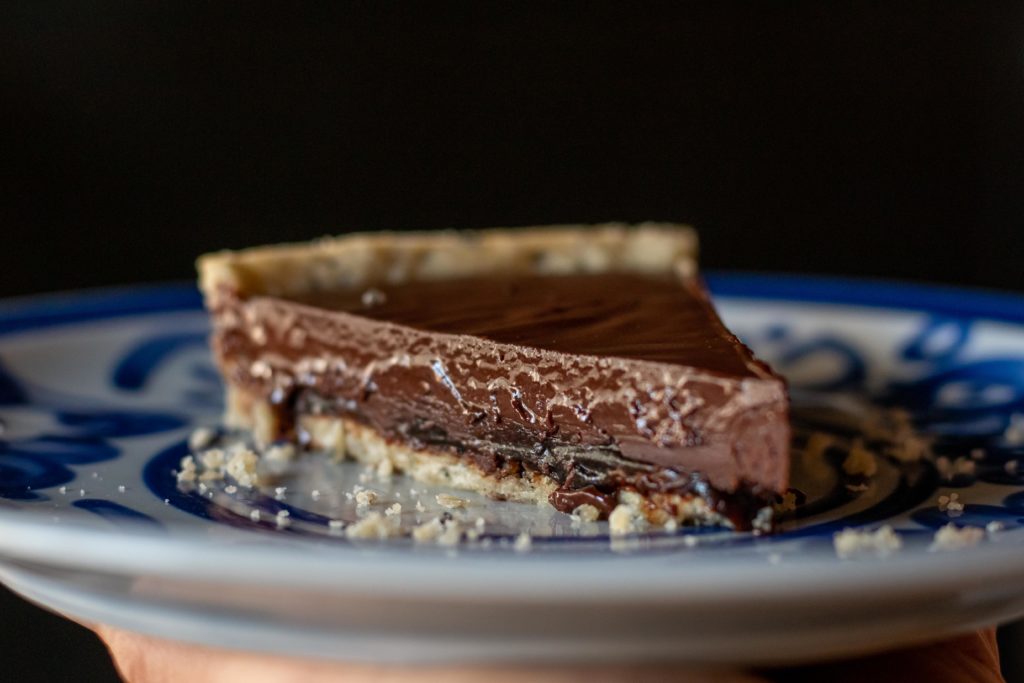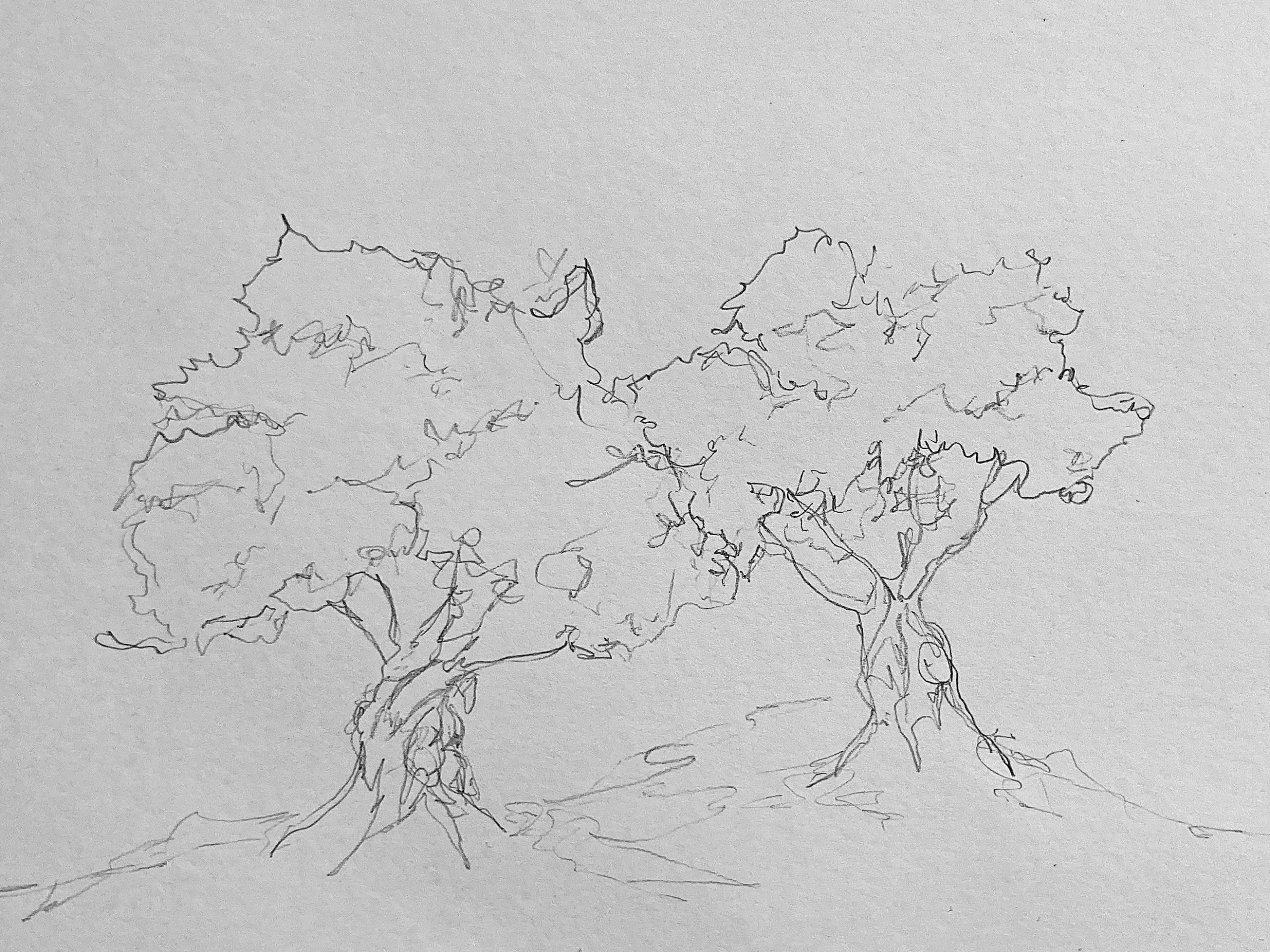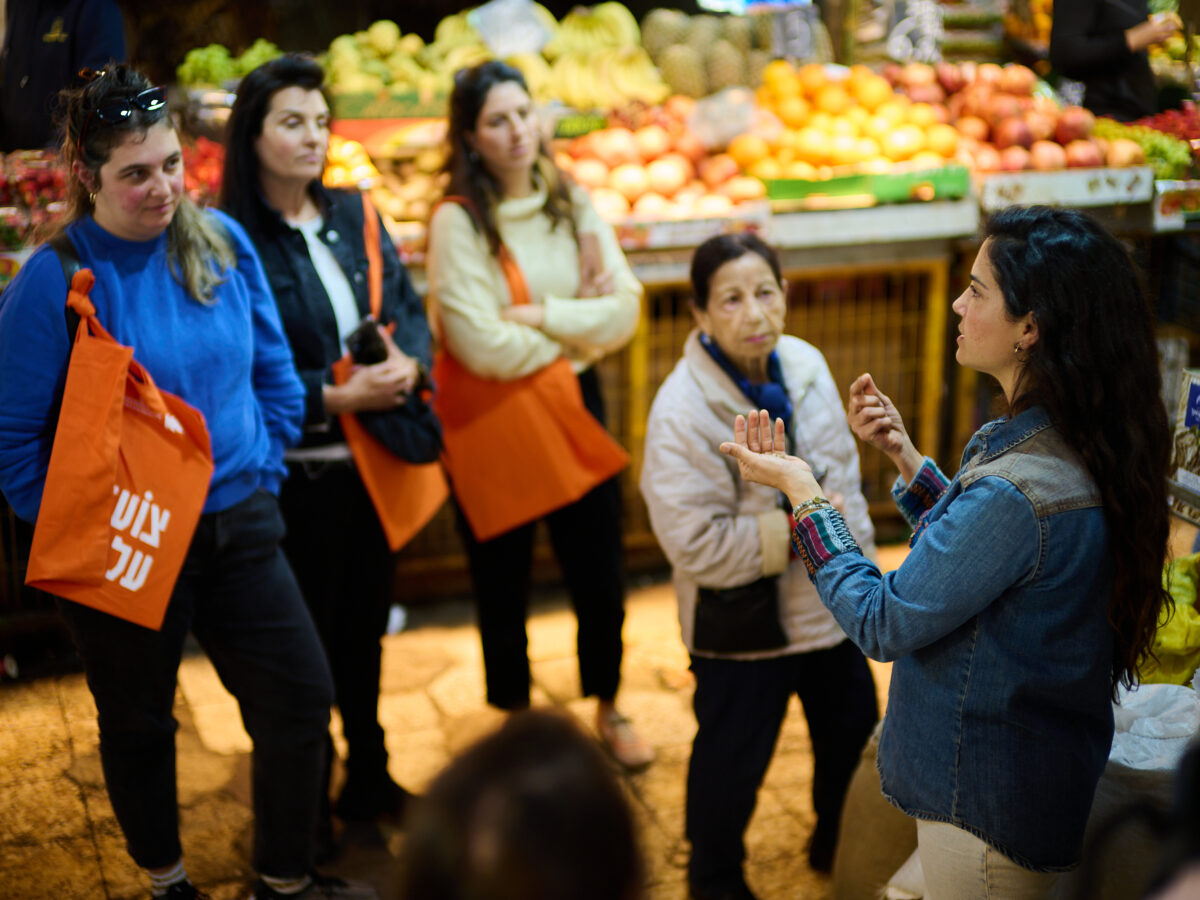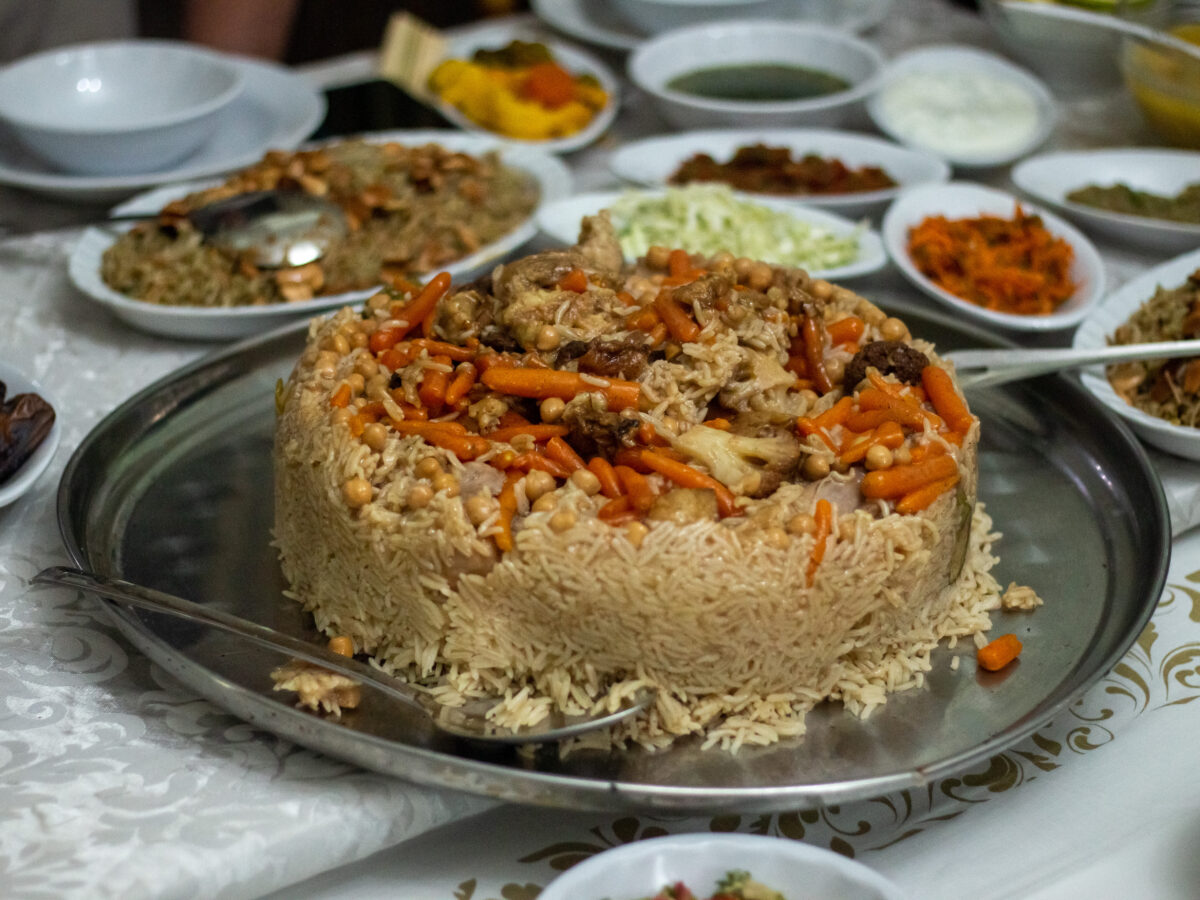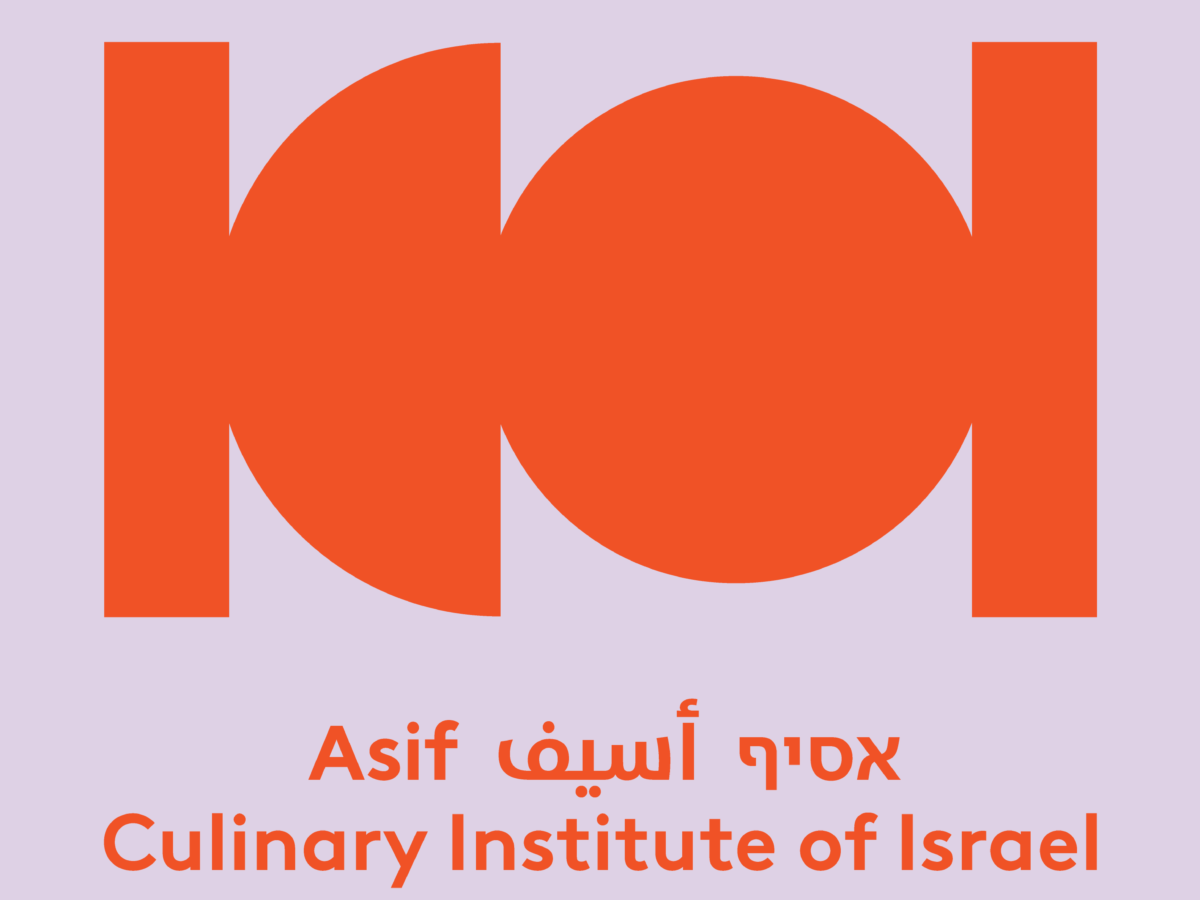"لو يذكر الزيتون غارسه لصار الزيت دمعا"
"לו זכרו עצי הזית מי נטעם היה השמן הופך לדמעות", מחמוד דרוויש.
סבא שלי נפטר לפני 7 שנים, ערב יום כיפור וחודש לפני תחילת המסיק. באותה שנה עצי הזית בחצרו, מזן נבאלי, היו עמוסים בפירות שמנמנים. העצים העתיקים ביותר בשכונה של סבי ניטעו כבר במאה ה-18 על ידי הסבא-רבא שלו, ולימים ניתן לה הכינוי עמארה – כרם זיתים. הוא תכנן איך ומתי נתחיל למסוק את העצים, דאג לנקות מתחתיהם כך שהנחת המחצלות ופעולת האיסוף תהיה קלה יותר, והתעקש שלא יתחילו בקטיף לפני הגשם הראשון. היורה באותה שנה הקדים והגיע יומיים אחרי פטירתו של סבי האהוב, כאילו השמיים בכו את מותו.
"שתוות תשרין", היורה, הוא כנראה הסימן העונתי החשוב ביותר באזורנו שנותן את אות הפתיחה לתחילת עונת המסיק. בתרבות הערבית זוהי עונת הברכה והשפע שבה מייצרים את עיקר האספקה הביתית השנתית של שמן וזיתים כבושים.
התקופה הזאת, בסוף עונת החום והשמש הלוהטת, גורמת לי להתאהב בסתיו כל שנה מחדש. בעוד בשדות, בהרים ובצדי הנחלים רואים עצים עירומים מעלוותם, עומד לו כמו בהתרסה עץ הזית ברוב פאר, לבוש כסות ירוקה עזה ועמוס בפירות. גם האוויר משתנה; הערב יורד מהר, מהר מדי לטעמי, ורוח קרירה נעימה מלטפת, כאילו באה לעזרת העוסקים במלאכת המסיק ושומרת אותם מהחום ומהיובש.
עונת המסיק מבטאת יופי שאין כמותו; משפחתיות, עבודה קשה, התמדה, אהבת האדמה וזיכרונות ילדות רבים, בניגוד חד למודרניות שבאה וכפתה את עצמה על חיינו. הריחוק ממקורות האוכל שלנו הרחיק אותנו גם ממסורות חקלאיות כמו גידול וקציר חיטה, ליקוט בטבע או גידול קטניות. מסורת המסיק היא ככל הנראה היחידה ששרדה ונשתמרה, כחוט אחרון ויחיד שמקשר אותנו לעבר ויוצר עבורנו רגעים וזיכרונות זהים לאלו שחלקו אבות אבותינו בעבר.
אי אפשר להתעלם מנוכחותו של המסיק, לא כל שכן מריחו המיוחד – ריח של זיתים טריים שהתערבב בריח של אדמה רטובה מגשם ראשון וריח מדורות עליהן הוכנו קנקני תה מרווה בכל בית או חלקת אדמה.
בלתי נמנע לכתוב על שמן זית מבלי לשקוע בנוסטלגיה. כל עץ בשכונה בה גדלתי קשור בסיפורים, תמונות וריחות שחוזרים אליי בכל פעם שאני מגיעה לבקר שם. העץ ממנו נפלה אחותי ושברה את היד, העץ שלענפיו החזקים קשרנו נדנדה והעץ שתחתיו הקמנו מדורה וסעדנו. מכל עבר אני יכולה עוד לשמוע קולות של צחוק מתגלגל, שירה וגם בכי. במוחי אני רואה הבזקים של ידיים מאובקות אוחזות כוס תה לוהט ועוגה בהפסקה מהעבודה הקשה. חצר מלאה בערימות של זיתים שניקינו ידנית מעלים וענפים כי סבא וסבתא לא סמכו על הניקוי של המכונה המודרנית בבית הבד. שבר ענן שמרטיב את כולנו עד העצם. ביקור לילה בבית בד שבסופו מתענגים על פיתה חמה, תה נענע וצלחת שמן זית עם ארומה ירוקה חריפה.
מאז נפטר סבי, שבע פעמים נמסקו הזיתים – 14 פעמים ללא סבתי – והמסורת עודנה נשמרת ואיתה גם הזיכרונות. בביתי שלי לא היו עצי זית. לפני שהתחתנו ועברנו לגור בו, ביקשתי שיינטעו עצי זית בחצרנו מתוך רצון להנחיל שייכות והמשכיות, והרגשתי שדרך מעשה זה אשמר את המסורת ואעביר אותה הלאה לבנותיי ובבוא היום גם לנכדיי. העצים שנטעתי הם מזן מנזנילו, זן ספרדי שפחות מתאים להפקת שמן, ולכן ביקשתי מאבי שיבצע הרכבה וכך ענפים מהעצים של סבי 'הולחמו' לגזע הכרות של העצים שלי. תוך שנתיים כבר גדלו לי עצי זית נבאליים, צאצאים של העצים האהובים והמיוחדים של משפחתי.
הזית בתרבויות האזוריות השונות
"כנראה מתישהו יגיעו החוקרים למסקנה שמה שהכי מאחד אותנו, אנשי המזרח התיכון, אינו אינטרסים משותפים או געגוע לעבר מפואר החלף ואיננו עוד, אלא הביטחון הפנימי המוגמר שקיים בכל אחד מאיתנו שאין שמן חוץ משמן זית, עובדה שלא אמורה להעליב אפילו את גדולי אוהבי החמאה, היות והיא תלויה בסופו של דבר בעניין של טעם", כך פותח פארוק מרדם בק, היסטוריון וסופר צרפתי-תוניסאי, את פרק הזיתים בספרו "המטבח של זריאב".
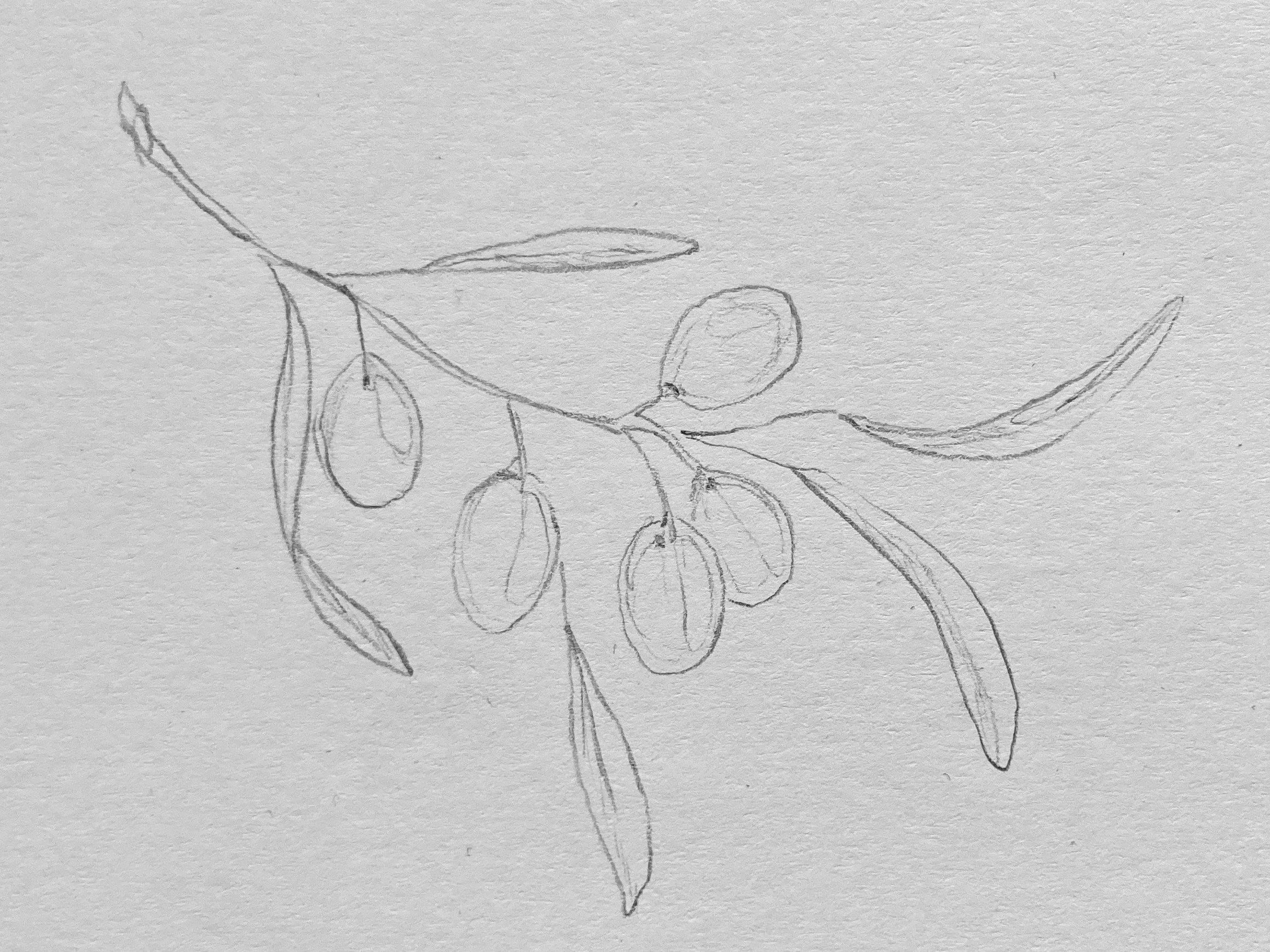
הנוף הים תיכוני עוצב על ידי עץ הזית, יותר ממה שהגפן והחיטה השפיעו יחדיו. אי אפשר לדמיין את ההרים והגבעות בלי עצים אלו ומשחר ההיסטוריה הוא נוכח בציורי קיר ופסיפסים כמו גם בשירה וספרות. עדויות ארכיאולוגיות מראות שכבר לפני 7,000 שנה היו לאנשי הים התיכון, במיוחד המזרחיים שבהם, יחסים מיוחדים עם עץ זה.
בזכות חשיבות השמן לחיי אנשיו, הוא הפך למרכזם של מיתולוגיות וסיפורי עם רבים. שויכו לו סגולות רפואיות שמסוגלות לרפא כל מחלה, בנוסף להיותו מקור אור חשוב, וכך הוא זכה למעמד קדושה. הפרעונים למשל טוענים שהאלה אייזיס הייתה זו שלימדה את בני האדם את רזי גידול הזיתים והפקת השמן מהם, והוא מוזכר פעמים רבות במגילות פפירוס כחלק מהתרבות המצרית העתיקה. היוונים לעומת זאת ייחסו את הכבוד הזה לאלה אתנה, אלת האמנות והמדע, אשר לפי האמונה נטעה את עץ הזית הראשון. בכתביו של סופוקלס, סופר יווני שחי במאה החמישית לפנה"ס באתונה, מוזכר כי "ישנו עץ שלא ידענו כמותו, אשר צומח באדמת אסיה והוא מתנת האלים ומוגן בעיניו של האל זאוס". על פי המקורות המונותאיסטים החזיקה היונה ענף של זית עם חזרתה לתיבת נוח אחרי המבול, וכך הפך ענף הזית גם לסמל לשלום ואות השלמה בין יריבים.
מסורת גידול עצי הזית התחילה בחופים המזרחיים של הים התיכון, ורבים מהחוקרים ומהספרים מסבירים שהזית נדד משם למצרים, יוון ולאחר מכן לצפון אפריקה. יעברו עוד שנים רבות עד שהוא יגיע גם לאיטליה ולפרובנס. על מנת לספק את כל הידע סביב עץ הזית – היסטורית, גיאוגרפית, כלכלית וגם מיתולוגית – דרוש יותר ממאמר קצר אחד, ולכן אתמקד וארחיב על הקשר של עץ הזית לתרבות הערבית. תושבי מדינות ערב, מדתות ומעדות שונות, האדירו לאורך ההיסטוריה את עץ הזית וייחסו לו משמעויות סמליות שאף עץ אחר לא זכה להם. הוקדש לו פרק שלם בקוראן תחת השם "הזית", והוא מופיע פעמים רבות גם בפרקים נוספים. בפרק "אלנור" (האור, בעברית), משווים את אורו של האל למנורה ש"דולקת בשמן עץ הזית המבורך, העץ אינו נוטה מזרחה ולא מערבה. שמנו כמעט מאיר אף אם לא תיגע בו אש. אור על גבי אור". ציטוט נוסף מהמקורות מיוחס לנביא מוחמד(עליו השלום) באומרו, "תאכלו שמן זית ותמרחו אותו שכן מעץ מבורך קדוש הוא".
עץ הזית כסמל למאבק לאומי
יהיה קשה לכתוב על מקומו של שמן הזית במטבח הפלסטיני מבלי להזכיר כי עץ הזית הוא סמל המאבק הפלסטיני להכרה לאומית, מה שמביא לכך ששמן הזית הפלסטיני הוא כנראה אחד המאכלים הכי פוליטיים בעולם כולו. הישרדותם של העצים העתיקים – עתיקים בהרבה מאלה של משפחתי מהמאה ה-18 – היא עדות פיזית לנוכחותנו וכי הם קשורים לזהותנו וזכותינו על האדמה. דרך עצים אלו יודעים אנחנו ששורשינו ניטעו באדמה זו כבר לפני מאות שנים. לכן, בעיני פלסטיני, יהיה זה מעליב להתייחס לעץ הזית כאל "עוד עץ"; הזיתים הם כל מה שנשאר, ולהאחז בהם ולהגן על האדמה בה הם שתולים, נחשב לחלק מהמאבק הלאומי שלנו.
בנוסף, כלכלת הבית של משפחות רבות נשענת על הזיתים, שכן השמן והפירות עצמם אמורים להספיק לשימוש הבית לכל השנה עד המסיק הבא. כך עונה זו מציפה גם סוגיות העוסקות במי מחזיק ושולט באדמה. מאחר שעצי הזית צומחים לאט, ועוברות שנים עד שהם נושאים פרי, כל עקירה, השחתה או מוות של עץ מלווה לא רק באבדן רגשי כבד, אלא מהווה פגיעה ממשית וסכנה קיומית לאותה משפחה.
שמן הזית במטבח הערבי
אמנם הערבים לא צורכים את אותן כמויות שמן זית כמו היוונים שיאני העולם, אבל הם בהחלט מהעמים שמרבים להשתמש בו. עונת המסיק מביאה עימה שלל מנות נדיבות בשמן זית חדש מאיכות מעולה, שנמסק בזהירות ולרוב בקטיף ידני, זית-זית, תוך הקפדה על גודל פירות אחיד וזמן הבשלה שווה. בין המנות האזוריות השכיחות בעונה אפשר למצוא טאג'ין בחורשף בקצה המערבי של הים התיכון (מין קונפי ארטישוקים ובשר עם זיתים שחורים), מזטים בלבנון שמבוססים כמעט אך ורק על שמן זית – ללא שומן אחר או בשר – כמו מיני ירקות קונפי וסלטים מבושלים או טריים.
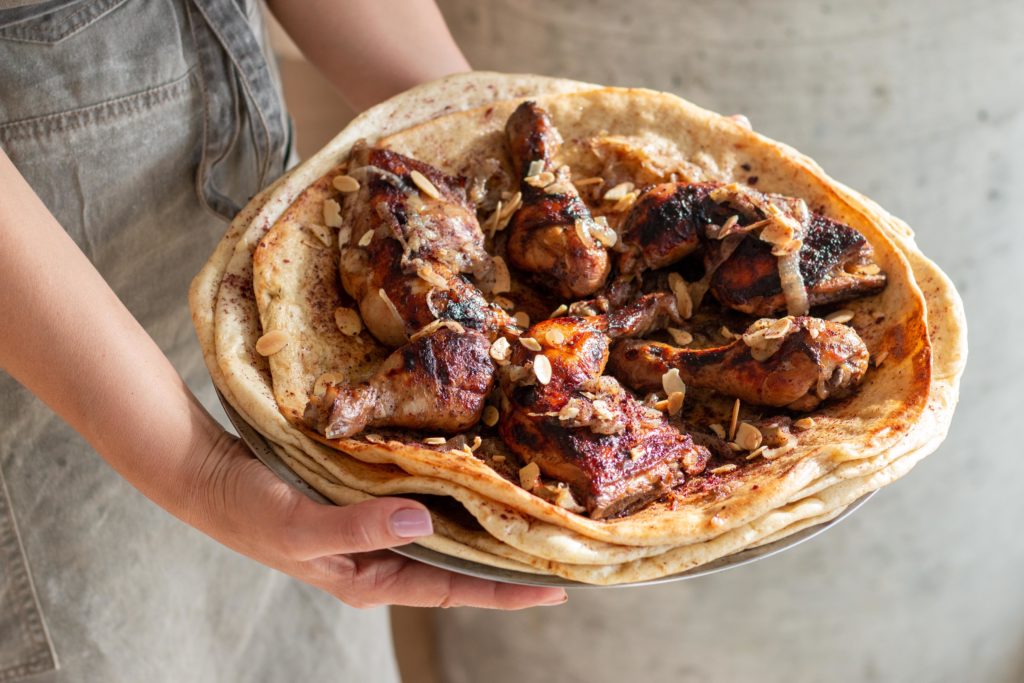
גם במטבח הפלסטיני ישנן מנות מסורתיות שונות בעונה זו. שמן הזית היה כמעט השמן הבלעדי ששימש את משקי הבית בעבר, וצלוחית עם זעתר ושמן זית תהיה נוכחת דרך קבע על כל שיש במטבח. פטאייר – מאפי שמרים ממולאים זעתר טרי ובצל עם המון שמן זית – נאפים לאורך כל החורף, וישנו כמובן המסאחן.
המנה הזו קיבלה מקום של כבוד בתרבות האוכל הפלסטינית, והיא מנה שאוכלים יחד; מערום של פיתות רחבות אשר ביניהן בצל שבושל באיטיות בשמן זית ומעל הכל חלקי עוף עסיסיות שבושלו גם הן באותו השמן ועברו צלייה לאחר מכן. עליהן בוזקים סומאק טרי, בוצעים את הפיתות בידיים, מפרקים את העוף ואוכלים. החודש אני מביאה את המתכון המשפחתי המסורתי שעליו גדלתי ואותו אני מכינה עד היום. זאת לצדו של מתכון לטארט שוקולד, תמרים ושמן זית שהוא פרשנות לעוגיות הצמיד (כעכ, בערבית) שנהוג להכין גם כן בעונה – בצק פריך על בסיס שמן זית ומתובל בקצח שעוטף מלית של תמרים. בצק העוגיות הפך לקלתית, ובנוסף למלית של תמרים ישנו גם גנאש שוקולד ושמן זית שהחיבור ביניהם יוצר בעיניי שלם חדש.
